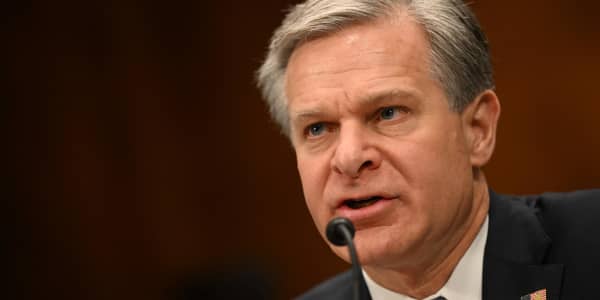The numbers speak for themselves.
LinkedIn is host to 107 million U.S. users and 332 million worldwide. Twitter boasts 232 million active users, and Facebook enjoys a whopping 1.35 billion postings.
Positioning and promoting oneself in cyberspace can be complicated, and electronic engagement should be treated like any other business interaction, as communication is currency.
In just one year alone, online activity has doubled, from 21.5 to 41.9 billion "actions" online. In the financial industry, LinkedIn had more than 2 million members as of 2013, with two people signing up for a LinkedIn account every second.
Identity tools from business cards to email signatures now routinely include URLs for LinkedIn profiles, as well as links to Twitter accounts and Facebook pages. Individuals and organizations with minimal—or absent—electronic footprints are not only less visible but often less respected, as online visibility is no longer optional.
Read MoreRare CEO skills that an Ivy MBA won't give you
Whether you are building a career or a company, if you're not online, you don't exist.
"Relationships, brands and even businesses can be built by using social media," said Jennifer Openshaw, executive director of the Financial Women's Association (FWA). "It's a megaphone for extending your current content and communications more broadly and making powerful connections in seconds."
How can you leverage this new medium for you and your company?
Job searching
The world has turned upside down. Would you believe a whopping 94 percent of recruiters use LinkedIn to vet candidates? HR leaders are now bypassing headhunters and opting for the ability to find their best candidates using smart search capabilities.
That's why those seeking new careers or positions should pay careful attention to the quality and currency of their LinkedIn profiles.
Executive search expert Stacy Musi of Chadick Ellig, a New York-based recruiting firm, said, "Every executive should have a current and descriptive LinkedIn profile that clearly articulates their personal brand and highlights their areas of greatest expertise."
But that doesn't mean you should ignore face-to-face and phone connections.
"Many searches are still filled the old-fashioned way: through real-time networking," Musi pointed out.
Read More11 CEOs who need to do more to earn their millions
Alexandra Tyler, vice president of integrated campaign management for a leading financial services firm, pointed out that "keywords in your online profile enable you to be found easily in search engines by top recruiters. So be purposeful in crafting your online summary and profile to get to the top of search-engine pages."
Building a human brand
One of the failures of corporate branding is forgetting to humanize. Most marketers place ads or push out a message, when it's those companies who create a connection that can take a brand to another level.
That's why Linda Descano, managing director and global head of content and social at Citi, believes "it's key to put a human face on big corporations. This can be done through tweeting, posting, writing and then gauging the success of these initiatives."
She adds, "This is also true for individuals. You must always manage and maintain a digital brand, as this enables you to be known for what you want and simultaneously helps you to better protect your specific brand."
Read MoreWhere the lending gap is closing fast
And that branding needs to be consistent. While Openshaw notes very different purposes and audiences between, say, LinkedIn and Facebook or Twitter and Instagram, keep in mind what Facebook CEO Mark Zuckerberg once said: "You have one identity. The days of you having a different image for your work friends or co-workers and for the other people you know are probably coming to an end pretty quickly. Having two identities for yourself is an example of a lack of integrity."
Openshaw, the author of "The Socially Savvy Advisor," points to the "convergence" of all media.
"The idea that there are clear lines between personal and professional identity has always been a myth," said Kristin Johnson, senior advisor at Logos Consulting Group. "Social media hasn't changed that, but it has cast a brighter spotlight on the interconnectedness of our personal and professional relationships, therefore putting greater responsibility on people to consider how perceptions from online identities feed into relational outcomes—both personal and professional—in the 'real,' offline world."
The 4 C’s of social communications
Indeed, positioning and promoting oneself in cyberspace can be complicated, and electronic engagement should be treated like any other business interaction, as communication is currency.
Whatever social media platforms you choose to use, be sure to keep these four C's in mind:
- Be current: Keep all information, including head shots, up to date.
- Be consistent: With your language, tone and profile photos (to be recognizable on each platform).
- Be compelling: Every posting should be as clear, concise and clever as possible.
- Be critical: Don't accept just anyone into your network; vet them appropriately.
And finally, regarding the company you keep, follow the words of wisdom of Citi's Linda Descano:
"Accepting someone via your own social media channels is an endorsement of that individual. You must ensure they're people of stature with high character who reflect your personal values. Stay true to yourself and conduct yourself online as you would offline at all times."
—By Raleigh Mayer, special to CNBC.com





